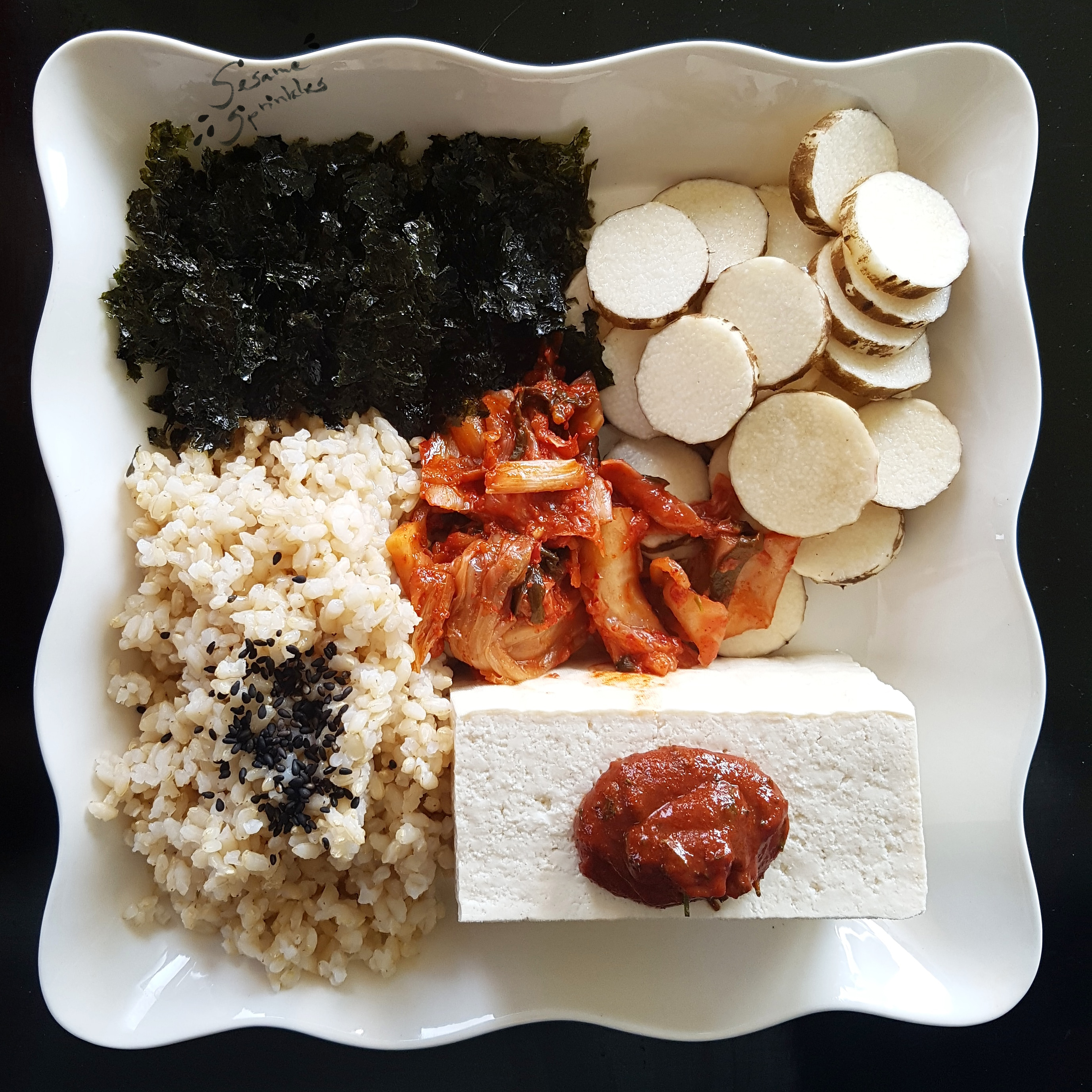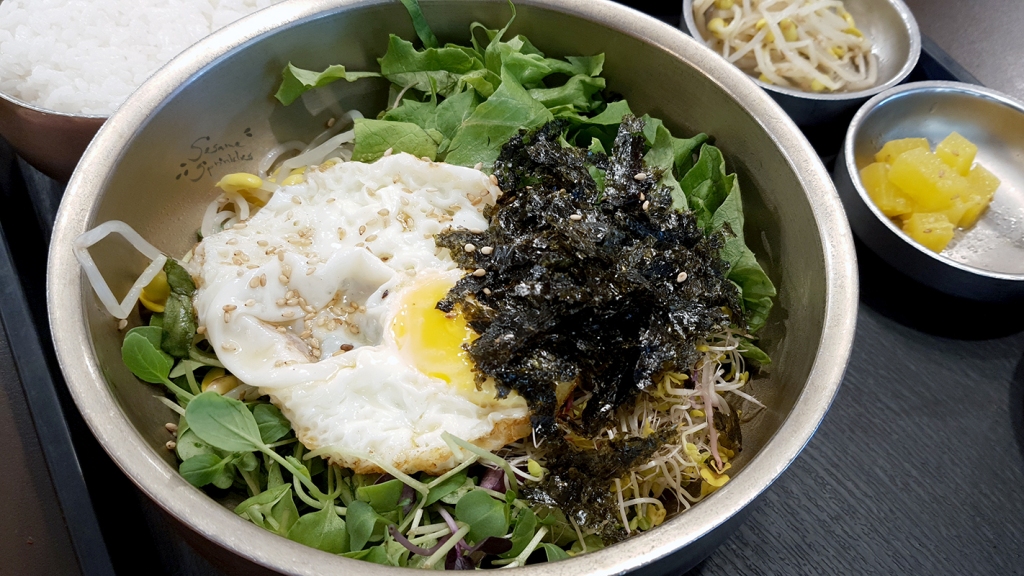The dish that is perhaps the most easily found option for vegans, vegetarians or people following a halal or kosher diet is….
🍚🍄🥕🍳🥒🍆
Bibimbap 비빔밥 – literally “mixed rice”

Hot Stone Bowl Bibimbap (Dolsot Bibimbap 돌솥비빔밥) with mushrooms, rice on the side, soy sauce and side dishes.
“Bap” 밥 meaning rice is one of the staple foods of Korean cuisine, so many dishes contain rice and also carry the word “bap” in their name.
Beside 🍚rice, the dish consists of a number of varying toppings (mostly seasoned 🥕vegetables, 🍄mushrooms and 🍳egg) plus a sauce. There are innumerable versions of Bibimbap! I will soon introduce common versions with classical combinations of vegetables as well as post innovative creations from modern restaurants here.

Normally, the cheaper versions do not contain meat or fish produce at all. Otherwise, you can ask the waiter or cook to omit the respective topping when preparing your serving. You can do so by saying something like this:
🥩 “Gogi ppae juseyo.” “고기 빼 주세요” – Without meat please. 🍖
🐟 “Saengseon ina haemul ppae juseyo.” “생선이나 해물 빼 주세요” – Without fish or seafood please. 🦐
🥚 “Gyeran ppae juseyo.” 계란 빼 주세요” – Without the egg please. 🍳

Sauce is added to personal preference.
Another key ingredient of Bibimbap is the sauce. The classical sauce is Korean fermented Chili sauce (gochujang 고추장), which in some cases has been upgraded with pieces of beef (this is mostly the case in more expensive restaurants). At other times, you have a selection of different sauces to choose from. Beside chili sauce, I’ve encountered versions of Bibimbap which have been served alongside seasoned soy sauce (양념 간장), a mustard sauce (겨자소스) or even a sauce made from sesame seeds.
How to eat:
In the large serving bowl, evenly mix the rice, toppings and sauce, which you add according to your personal taste. Ideally, chopsticks are used to stir everything, so that the rice grains are not mushed into a paste – but this takes more effort than simply using a spoon! 😆 The mixed rice is then eaten with a spoon.
Where to find:
Simple versions of Bibimbap can be found in even the smallest, most basic restaurants of Korea, the so-called bunsikjeom 분식점. There are restaurants, which specialize in Bibimbap and thus offer a range of different versions. In general, there exists at least one Bibimbap option in most restaurants serving Korean food.

What types of Bibimbap are there? How many different kinds of Bibimbap exist?
Technically, there are endlessly many variations of Bibimbap, but there are a few classic combinations! Regarding veggie-friendly Bibimbap, these are particularly important ones:
- Beoseot Bibimbap 버섯비빔밥 – Bibimbap with mushrooms
- Bori (Bibim)bap 보리(비빔)밥 – Bibimbap with cooked barley instead of rice
- Saessak Boribap 새싹보리밥 – Barley Bibimbap with sprouts
- Sanchae Boribap 산채보리밥 – Barley Bibimbap with mountain herbs
- Dolsot Bibimbap 돌솥비빔밥 – Bibimbap served in a hot stone bowl
- Dotorimuk Bibimbap 도토리묵비빔밥 – Bibimbap with acorn jelly
- Gangdoenjang Bibimbap 강된장 비빔밥 – Bibimbap served with a thick Doenjang sauce (fermented soy bean paste)
- Gondeure Bibimbap 곤드레비빔밥 – Bibimbap with rice plus thistle greens and a few toppings
- Saengyachae Bibimbap 생야채비빔밥 – Bibimbap topped with fresh vegetables
- Sanchae Bibimbap 산채비빔밥 – Bibimbap topped with mountain herbs
- Saessak Bibimbap 새싹비빔밥: Bibimbap topped with sprouts and served with mustard sauce















the expression “~ 빼고 주세요” can be said without “고”, so….”~ 빼 주세요” would suffice. Or, alternatively “~ 빼고요”
LikeLiked by 1 person
Thanks! I’ll adjust it accordingly!
LikeLike